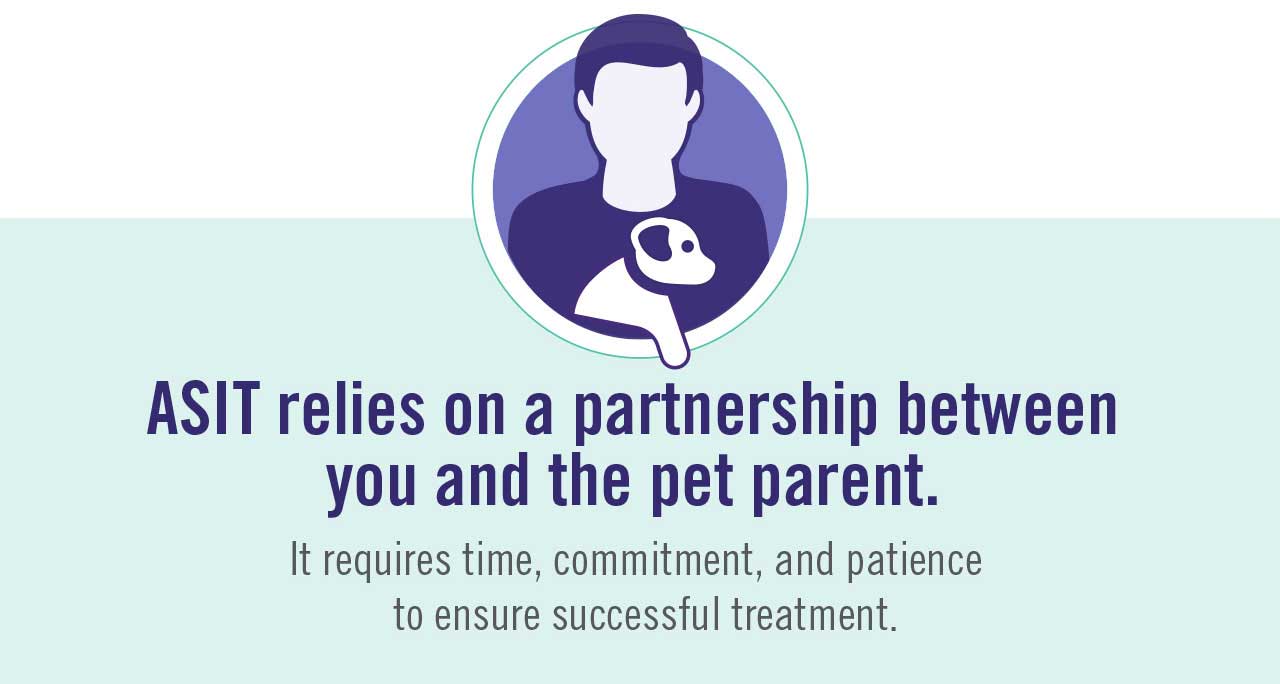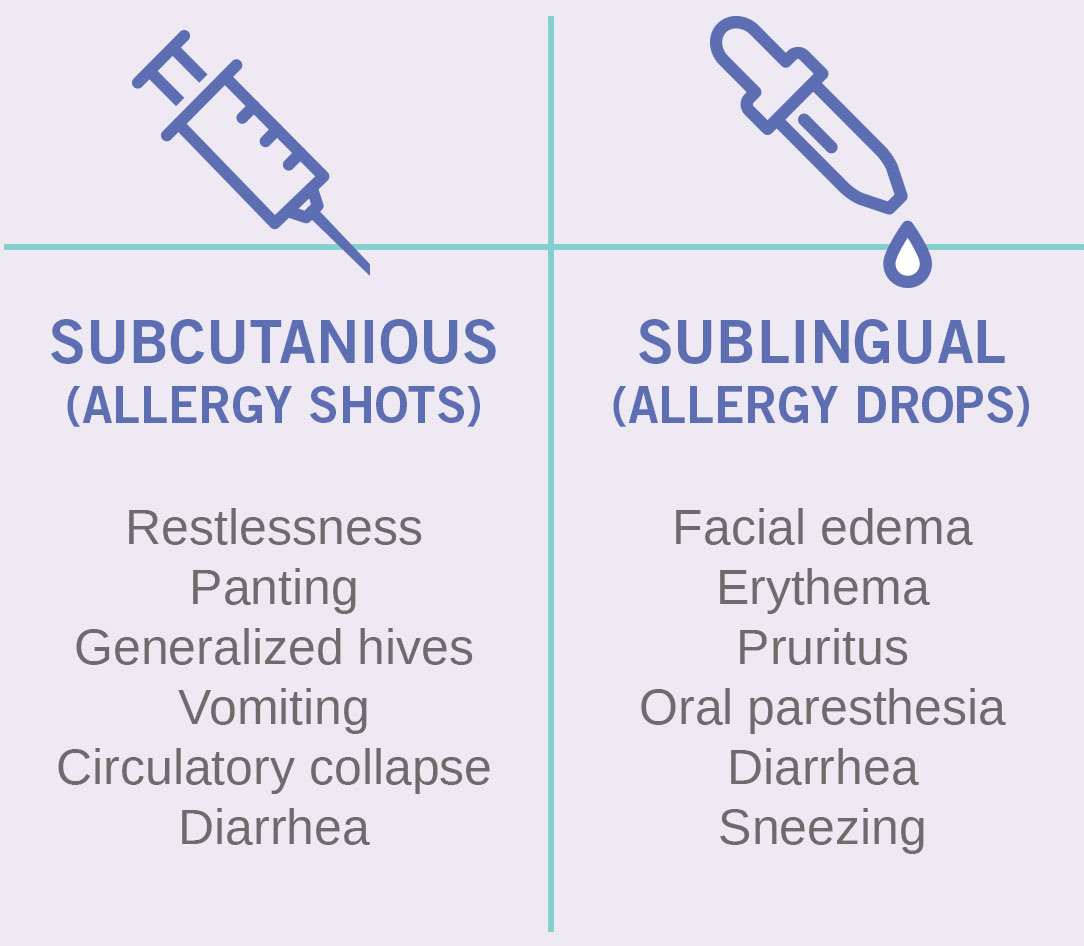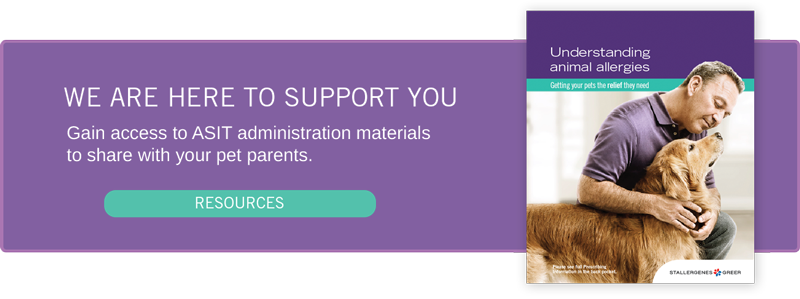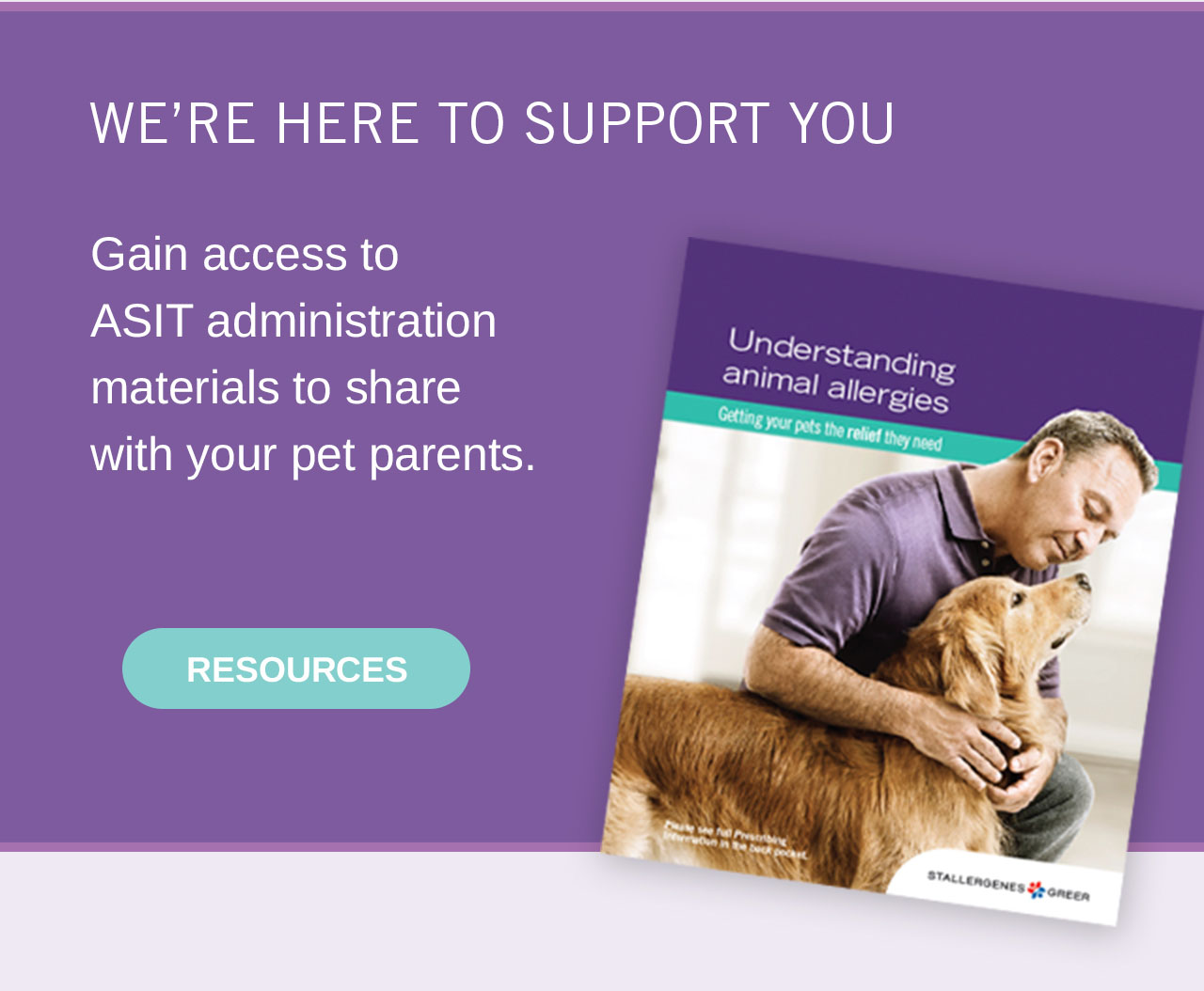an effective
way to treat allergies
an effective way to treat allergies
Allergen-specific immunotherapy (ASIT) works to naturally modulate the immune response, and may be appropriate when an allergy is established and the pet cannot avoid exposure to the allergen.1,2
Why Allergy Immunotherapy?
Allergy immunotherapy is the only therapy that treats the underlying cause of the allergy, helping the pet’s immune system develop a resistance to allergens, thereby reducing allergic symptoms.1
Allergy immunotherapy has an established safety profile that over time:
Mechanism of Action
Allergy immunotherapy generally results in a modification to the cellular regulatory mechanisms involved in the allergenic reaction. Although the precise mechanism of action of allergy immunotherapy is unknown, research suggests there is the potential for long-term sustained relief of allergy symptoms.1,3-6
Finding the right match for your patients
ASIT can be administered two different ways to help fit the needs of your individual patients and pet parents.
- Administered under the skin by the pet parent
- Pet parent must be willing to administer the injections
- More frequent injections at treatment onset1
- Eventually, injections may only be necessary weekly or monthly1
- Administered orally by the pet parent
- Given daily for the entire treatment period1
- Option for patients and pet parents who are not comfortable with allergy shots7


ASIT IS SAFE FOR MOST ANIMALS
Although adverse reactions to allergy immunotherapy are infrequent, they can be severe and be the result of a highly sensitive animal.1


Test the way you want
The purpose of allergy testing is to help determine the appropriate allergens to formulate ASIT. There are two different ways to confirm offending allergens:
Intradermal Testing (IDT)
- Gold standard
- The method that other tests are measured against8
- Performing IDT requires proficiency; therefore, staff training will be needed
- Tests the skin directly
- Less occurrence of false positive results than with serum in vitro testing
- However, severe skin disease may result in false positive and/or false negative results8
- Testing can be done on-site
- Results available in a couple of hours8
- Pets will require sedation and shaving8
- Although rare, there is a risk of systemic reaction9
- Flexible design
- Testing panels can be customized to the geographic region, so you can set up your own panels8
Serum In Vitro Testing
- No training required
- Easy blood draw with low risk8
- Pets do not require sedation or shaving
- Objective and measurable results
- No need for visual interpretation
- Lower risk of drugs interfering with test results
- Concurrent anti-inflammatory/antipruritic therapy10
Talking to Pet Parents
It’s important that pet parents fully understand the commitment that is needed when treating their pets with ASIT. Here are some topics that pet parents should understand in order to better help their pets:


